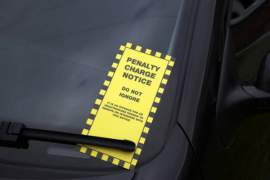
Colorado Parking Laws

Knowing the Colorado Parking Laws
Some laws are taken for granted, you know? It’s a matter of fact. The situation’s no different in Colorado, so be sure you know what those Colorado parking laws are to avoid any citations you might not have been aware of:
What Are Some of the Most Important CO Parking Laws?
Easy. There are three statutes under the Colorado parking law specifically dealing with parking:
1. The CO Parking Laws of Starting a Parked Vehicle
2. The CO Parking Laws of Parking With the Intention of Leaving Vehicle
3. The CO Parking Laws of Parking in Prohibited Places
As far as Colorado parking laws go, these you have to be aware of specifically for a good number of reasons. Starting with….
The CO Parking Laws of Starting a Parked Vehicle
According to the statute in regard to Colorado parking laws, no person should be allowed to start a parked vehicle until there’s reasonable safety.
What is reasonable safety? That could constitute anything like:
1. Congested Traffic
2. Environmental Concerns
3. Even Weather
If it’s proven that a driver started the car without taking these precautions, believe it or not – under Colorado parking laws – that driver can be issued a Class A parking violation.
What About the Colorado Parking Law of Parking With Intention of Leaving a Vehicle?
The key to that Colorado parking law is about where you intend on leaving the vehicle. Prohibited areas would include:
1. Business or Residential Districts on Paved Roads
2. Business or Residential Districts on Improved Roads
3. Or the Main-Traveled Part of a Highway
The only way to legally leave your vehicle in any of these areas would be proper emergency lights as stipulated by the Colorado parking law. This would involve, of course, emergency situations where suitable parking hasn’t become available.
And as For Prohibited Places Outside the Realm of Emergency….
Unless otherwise directed by law enforcement to place your vehicle for the purposes of avoiding traffic, no driver with a vehicle can park a car in any of these areas:
1. A Sidewalk
2. An Intersection
3. A Crosswalk
4. Between a Safety Zone and Curb
5. Next or Opposite to a Street Excavation or Obstruction
6. A Roadway Side at Edge or Curb of a Street
7. A Bridge, Elevated Structure, or Highway Tunnel
8. Railroad Tracks
9. A Controlled-Access Highway
10. The Area Between Roadways of a Divided Highway, Including Crossovers
11. Other Areas Prohibiting Parking
Specifically, it also lists in regard to safety zones and curbs that a vehicle can’t be parked with thirty feet of points on a curb opposite those specific ends of a safety zone.
And according to the Colorado parking law, no vehicle may be parked….
1. Within 5 Feet of a Public or Private Driveway
2. Within 15 Feet of a Fire Hydrant
3. Within 20 Feet of a Crosswalk
4. Within 30 Feet of a Flashing Beacon, Signal, Stop Sign, or Yield Sign
5. Within 20 Feet of a Fire Station Driveway
6. Within 50 Feet of a Rail for a Railroad Crossing


















